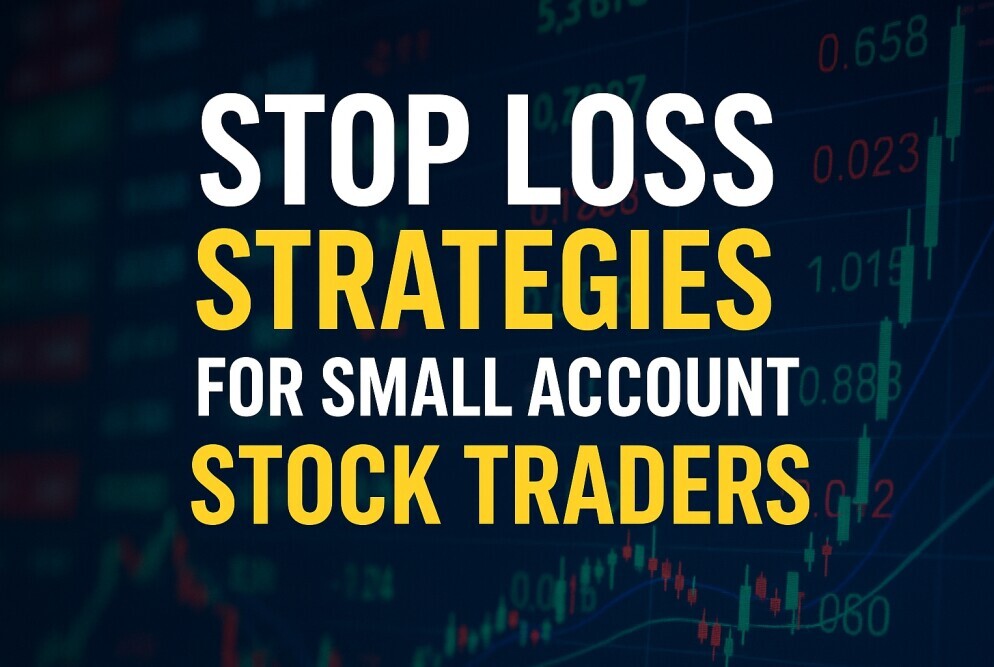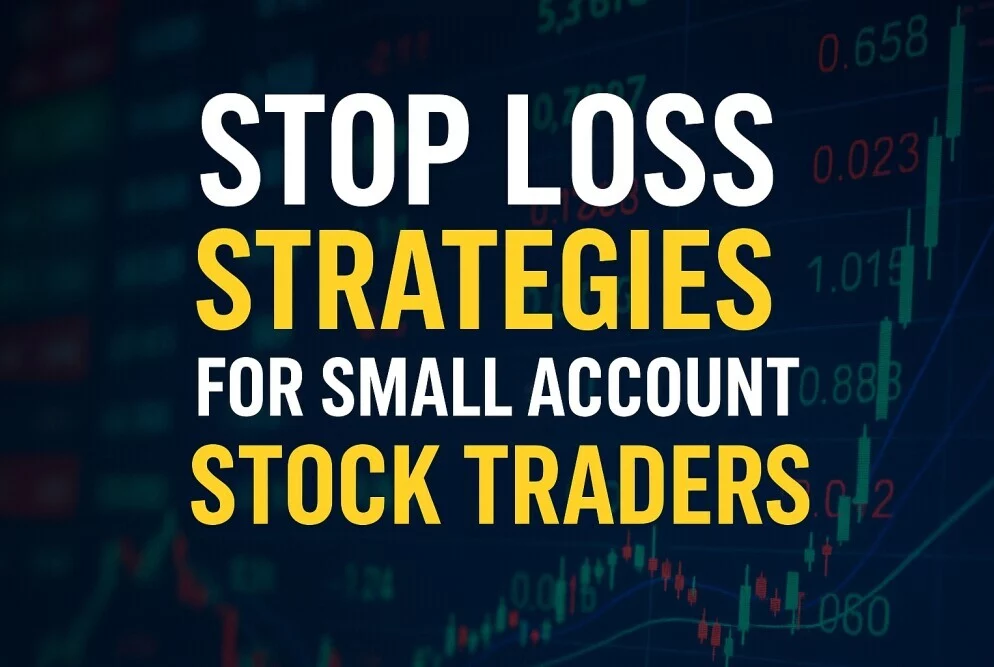Trading stocks with a small account is both exciting and intimidating. I know the thrill of chasing profits while protecting every dollar.
For small account traders like us, one mistake can wipe out weeks of hard-earned gains.
That’s why stop loss strategies are essential.
In this post, I’ll share practical and tested ways to use stop losses effectively, especially when trading with limited funds.

Table of Contents
Why Stop Losses Matter More for Small Accounts
When trading with a small account, risk management becomes the backbone of survival.
Unlike large traders, we cannot afford repeated mistakes.
Stop losses act as insurance.
They keep emotions in check and prevent account blowups. In fact, a proper stop loss can protect capital long enough to allow consistent growth.
Without stop losses, traders often fall into emotional spirals, holding onto losing trades and hoping for recovery. That is rarely sustainable.
Fixed Percentage Stop Loss
One of the simplest methods I use is the fixed percentage stop loss. It’s easy to apply and very beginner-friendly.
Here’s how it works: before entering a trade, I decide on a maximum loss percentage per trade. Usually, it’s between 1% and 2% of my total account.
For example, if my account is $2,000 and I set a 2% stop loss, the most I can lose on a single trade is $40.
This method helps preserve account life while still giving room for potential profits.
Support and Resistance Stop Loss
Another stop loss strategy is setting levels based on support and resistance. Instead of random percentages, I use the stock chart as my guide.
For example, if I buy a stock near support, I’ll place my stop slightly below that level.
That way, if support fails, I exit immediately.
This approach feels natural because it aligns with technical analysis. It also prevents staying in trades when clear levels are broken.
Moving Average Stop Loss
I also like using moving averages as dynamic stop loss levels. A popular one is the 9 EMA on shorter timeframes.
When I enter a trade, I’ll use the moving average as a guide. If the stock closes below it, I sell.
The moving average stop loss adjusts with price movement. It works especially well in trending markets, where static stops might trigger too early.
Volatility-Based Stop Loss
Stocks move differently. Some are slow, while others are very volatile. That’s why volatility-based stop losses can be powerful.
I measure volatility using indicators like ATR (Average True Range). The stop is placed a certain multiple of ATR away from entry.
This prevents random market noise from hitting my stop prematurely. At the same time, it gives enough breathing room for natural price swings.
Time-Based Stop Loss
Sometimes, trades simply do not move as expected. In those cases, I use a time-based stop loss.
If the trade doesn’t hit my profit target or stop within a set timeframe, I close it manually.
This strategy keeps my capital active instead of stuck in trades that waste opportunities.
Scaling Out to Protect Capital
A creative way to manage risk is scaling out of trades. When the stock moves in my favor, I sell part of my position.
For example, if I buy 100 shares and the stock rises 5%, I might sell 50 shares. Then, I move my stop loss to breakeven.
This way, I lock in profits and eliminate risk while giving the rest of my position room to grow.
Mental Stop Loss vs. Hard Stop Loss
Traders often debate whether to use hard stops or mental stops.
For small accounts, I believe hard stops are usually better.
A hard stop means entering the order in your broker’s platform.
This guarantees execution even if emotions take over.
Mental stops, on the other hand, rely on discipline.
Some traders prefer them, but I find them risky when starting out.
The Psychology Behind Stop Losses
Stop losses are not only numbers on a chart. They are tools to protect my trading psychology.
With a stop in place, I trade more confidently. I know my risk is limited, and I don’t second-guess every market move.
Without a stop, emotions dominate. Fear, greed, and hesitation lead to poor decisions.
That is especially dangerous for small accounts.
Common Mistakes with Stop Losses
Many small account traders misuse stop losses. Here are mistakes I’ve seen and made myself:
- Placing stops too close to entry.
- Moving stops further away after entering.
- Ignoring volatility.
- Over-leveraging trades.
Avoiding these mistakes takes practice, but it makes a huge difference in account growth.
A Complete Example
Let me give you a complete example. Suppose I have a $1,000 account. I decide to risk 2% per trade, or $20.
I find a stock trading at $50 with support at $48. I enter at $50, and set a stop at $48. My risk is $2 per share.
Since I can only risk $20, I buy 10 shares. This keeps my risk under control while allowing profit potential if the stock rises.
This kind of structured approach is what keeps accounts alive.
Recommended Video Resource
For a deeper understanding, I highly recommend checking out this video from Successful Tradings on YouTube:
🎥 Stop Loss Strategies for Options and Small Accounts
This channel has clear, practical tutorials that helped me shape my trading discipline.
FAQs About Stop Loss Strategies
Q1: What percentage stop loss is best for small accounts?
I recommend keeping it between 1% to 2% of your total account balance per trade.
Q2: Should I always use a hard stop loss?
Yes, especially if you are new.
Hard stops prevent emotional decision-making and protect capital especially for $100 or so accounts.
Q3: How do I adjust stops in volatile markets?
Use volatility indicators like ATR to set wider stops, giving trades enough breathing room.
Q4: Can scaling out replace stop losses?
No, scaling out is a profit-taking method. You should still use stops to manage risk.
Q5: Why do my stop losses always hit before the stock goes up?
You might be placing them too close. Try aligning stops with support, resistance, or volatility levels.
Final Thoughts
Trading with a small account is a test of discipline and patience. Stop losses are not optional — they are survival tools.
By applying fixed percentages, chart levels, moving averages, or volatility stops, I stay consistent and protect my capital.
The goal is not only to win trades but to stay in the game long enough to grow the account.
If you’re trading small accounts like me, master stop loss strategies. They are the shield that lets you fight another day.

Hold a Master Degree in Electrical engineering from Texas A&M University.
African born – French Raised and US matured who speak 5 languages.
Active Stock Options Trader and Coach since 2014.
Most Swing Trade weekly Options and Specialize in 10-Baggers !
YouTube Channel: https://www.youtube.com/c/SuccessfulTradings
Other Website: https://237answersblog.com/
